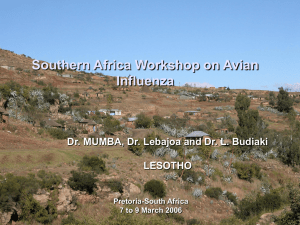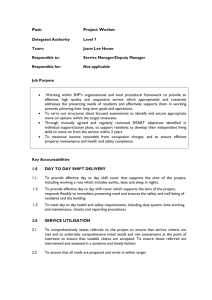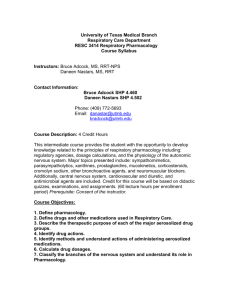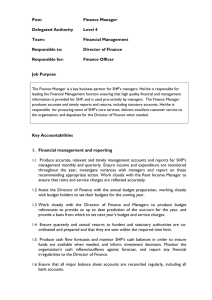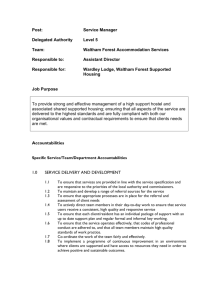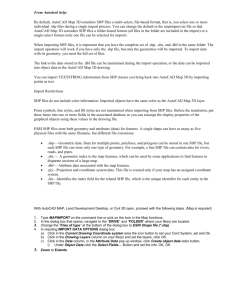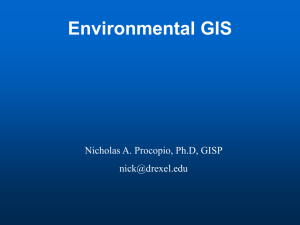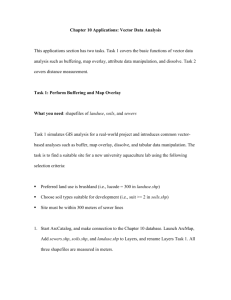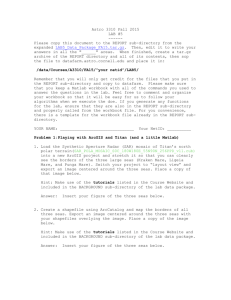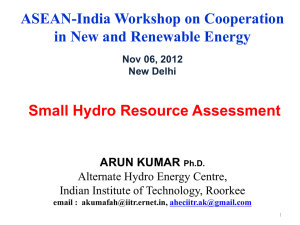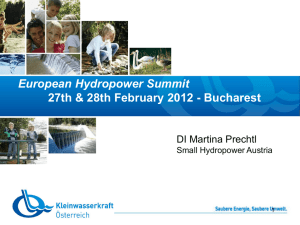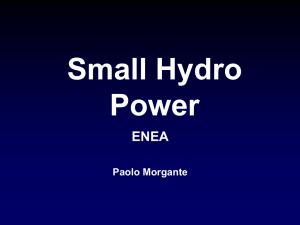1_ - SWITCH Training Desk
advertisement
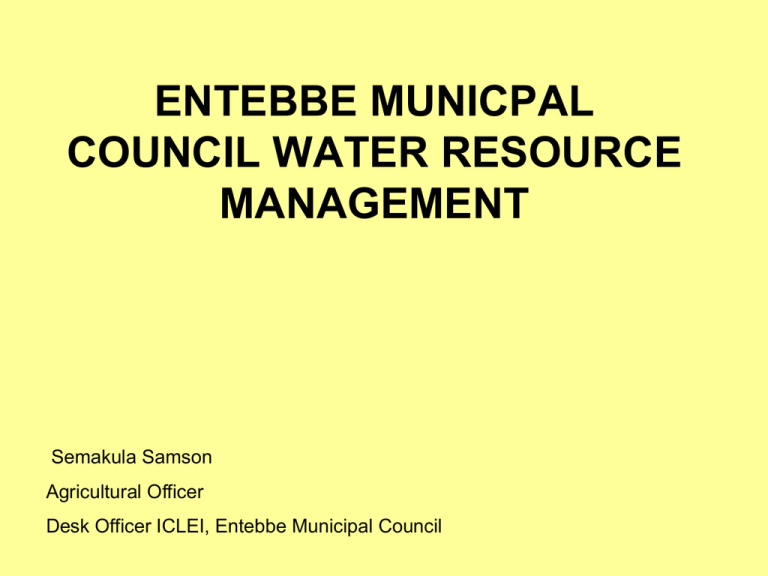
ENTEBBE MUNICPAL COUNCIL WATER RESOURCE MANAGEMENT Semakula Samson Agricultural Officer Desk Officer ICLEI, Entebbe Municipal Council BACKGROUND TO ENTEBBE MUNICPALITY LOCATION: • 00 04 N and 32 E, 37 Km South West of Kampala the capital city of Uganda. • A peninsular in the Lake Victoria measuring 56.2 square Kilometers of which about 20 Square Kilometers is water. Entebbe Municipaliity # # # # # # 100 # 0 Fish landing sites.shp Mixed farmland.shp Conservation areas.shp Lake victoria.shp Murramroads.shp Tarmacroads.shp Builtup area.shp Airport.shp Wetlands.shp Mainland.shp Boundary.shp 100 200 Miles N W E S HISTORY • Established 1893 as an administrative centre for the Colonial Government. • Capital City of Uganda in 1894, • Municipality in 1973. • The Municipality enjoys a Tropical climate, characterized by bimodal rainfall pattern Average annual rainfall is 2600mm. • Altitude: 1600Meters above Average Sea Level. • Mean daily temperatures 26.80 c DEMOGRAPHY 1. 57,518 inhabitants, Average population density 1500 persons per Square Kilometer (Population census 2002) About 100,000 day time population 2. Growth rate 6% 3. 9,500 households 4. 12% of the population lives below the poverty line. Source: Uganda Bureau of Statistics ADMINSTRATIVE UNITS • The Municipality is made up of 2 divisions A and B. Each of the Divisions is made up of two wards. • The Mayor is the Political Head of the Council and the Town Clerk is the Technical Head of the Council. BACKGROUND TO WATER SUPPLY IN THE MUNICPALITY Main source of water: surface water from Lake Victoria. Main source of safe drinking water is the National Water and Sewerage Corporation (NWSC) piped water grid. NWSC The NWSC operated a water plant in Entebbe since 1960 as the then Water Development Department, WDD, now the Directorate of Water Development (DWD), to catered for the water needs of Senior Government Officials and Government Institutions in the town at that time. After Independence in 1964, the number of Government Officials in the town grew and their residences and all government institutions in the town paid a flat rate for water consumed. In 1998 under the management of NWSC it became a policy to have all water supplied by NWSC metered. Consumers pay for the water as consumed. The NWSC had a daily pumping capacity 9,500 Cubic Meters with 7200 metered customers the bulk of whom are domestic consumers. At that pumping capacity about 70% household demand and 93% of community water demand was met. A new plant constructed for the town has a projected capacity 18,000 cubic meters per day. The Entebbe population has a daily per capita water consumption 79 liters. This amount is higher than the National per capita consumption which is at 60 liters, but is lower than international recommended at 150 liters (Population Reference Bureau, 1998) ALTERNATIVE WATER SOURCES IN THE MUNICIPALITY 1. Direct harvesting from the lake 2. Use of rain water WATER SUPPLY CHALLENGES 1. Population growth (increased demand for service). The population had grown three fold in the Municipality between the 1960 and today. 2. Poor payment culture The water service is not an exclusively prepaid service, clients default on their payments. 3. High cost of energy, electricity is the main source of power at the water plant and is expensive. 4. Receding lake levels, Lake levels drop bringing about new challenges to water supply industry : extending in-take pipes higher the costs of purification. 5. Water loss Water lost before it is considered consumed : illegal consumers, bursts and leakages, (estimated water loss is at bout 19%). 6. Decentralized governance Local councils have increased liability and strained capacity; 7. Pollution at point of use, water storage at point of use: water is kept unclean vessels at individual premises 8. Isolated settlements Villages of Kigungu Bunonko Villages are isolated, the cost of rolling out water infrastructure and maintenance is high as the pipes are laid over distances where there are no users. 9. Short term involvement of the Council The council is usually involved at the time of planning the water supply roll out. The maintenance and supervision of the network remains the responsibility of the NWSC. 10. community ownership; The community perception that the infrastructure as they believe it belongs to the government. 11. Cost of ‘FREE WATER’ ROLE OF THE MUNICIPAL COUNCIL IN WATER MANAGEMENT The Local Governments Act (Cap.243), outlines services of the Municipal Council as being among others: Oversee water supply; 1. Planning and coordination of water supply; 2. Monitoring and evaluating the water supply quantity and quality. Opportunities that exist that could be exploited to improve water use management 1. The vast Fresh Water Lake: the distance across which water has to be drawn by the vendor is short and could be reflected in the overall cost of water supply. 2. Enabling political environment: the leaders in the Municipality acknowledge the importance of water to the community. 3. Public Private Partnerships initiated by Council: The Council tries as much as possible to complement stakeholder efforts in the water industry 4. Fairly well sensitized community The above mentioned factors are key to the improved management of the water resource endowment and there is need to have greater stakeholder involvement strategic focus in and ownership of the water resource, however the issue of having water extended to all the household seems to still be the major issue
